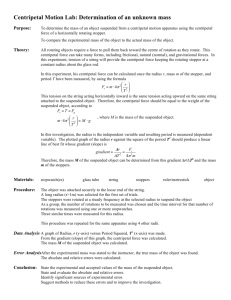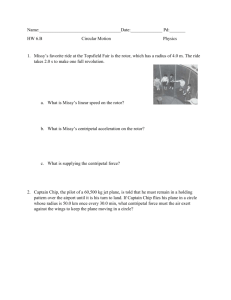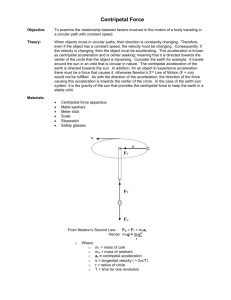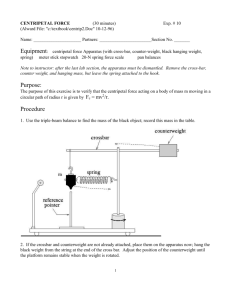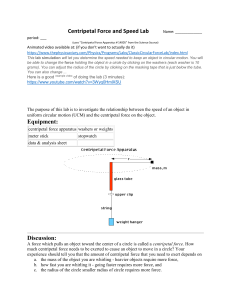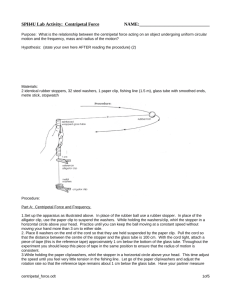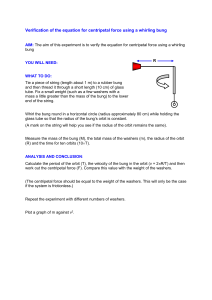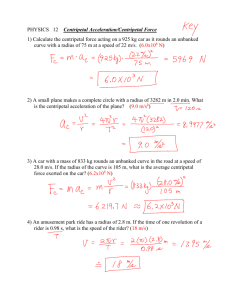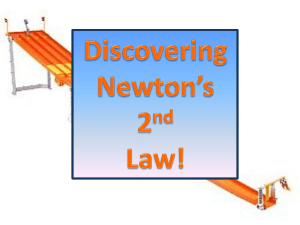Physics 40S
advertisement
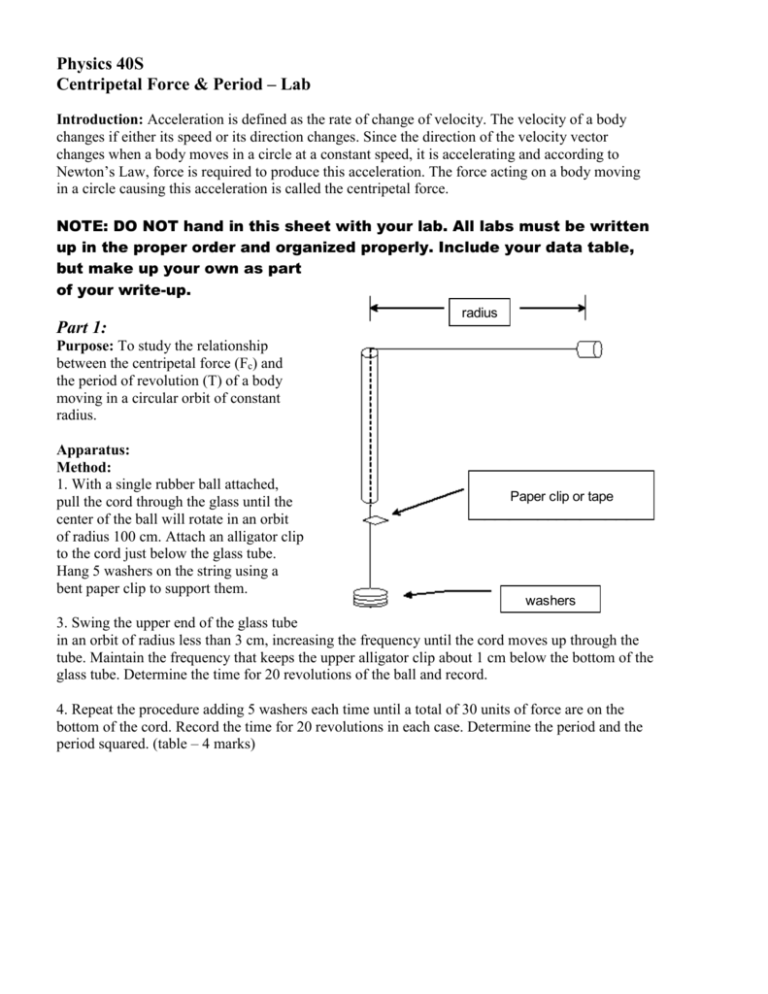
Physics 40S Centripetal Force & Period – Lab Introduction: Acceleration is defined as the rate of change of velocity. The velocity of a body changes if either its speed or its direction changes. Since the direction of the velocity vector changes when a body moves in a circle at a constant speed, it is accelerating and according to Newton’s Law, force is required to produce this acceleration. The force acting on a body moving in a circle causing this acceleration is called the centripetal force. NOTE: DO NOT hand in this sheet with your lab. All labs must be written up in the proper order and organized properly. Include your data table, but make up your own as part of your write-up. radius Part 1: Purpose: To study the relationship between the centripetal force (Fc) and the period of revolution (T) of a body moving in a circular orbit of constant radius. Apparatus: Method: 1. With a single rubber ball attached, pull the cord through the glass until the center of the ball will rotate in an orbit of radius 100 cm. Attach an alligator clip to the cord just below the glass tube. Hang 5 washers on the string using a bent paper clip to support them. Paper clip or tape washers 3. Swing the upper end of the glass tube in an orbit of radius less than 3 cm, increasing the frequency until the cord moves up through the tube. Maintain the frequency that keeps the upper alligator clip about 1 cm below the bottom of the glass tube. Determine the time for 20 revolutions of the ball and record. 4. Repeat the procedure adding 5 washers each time until a total of 30 units of force are on the bottom of the cord. Record the time for 20 revolutions in each case. Determine the period and the period squared. (table – 4 marks) Centripetal force (no. of washers) (Fc) 5 1. Fc time for 20 revolutions time for 1 revolution (T) Period squared (T2) 10 15 20 25 30 5. Plot a graph of T2 vs. Fc T2 Fc (2 marks) 6. Describe the shape of the graph obtained. Note that this is not a linear relationship. (1) 1 7. Graph T2 vs. . Is this more like a linear fit? (3) Fc T2 1 Fc Part II Purpose: To determine the relationship between the period (T) of a uniform circular motion, and the radius of the motion. Apparatus: Centripetal Force Apparatus as Part I Procedure: 1. In this experiment, the mass that undergoes UCM is fixed at 1 stopper and the value of the centripetal force is fixed at 12 washers. 2. With a radius of motion of 0.2 m measure the time for 20 revolutions, and record in the table. Calculate the period (T) and also T2. 3. Repeat for radii of 0.4 m. 0.6 m, 0.8 m, 1.0 m (3 marks) radius (m) time for 20 revs. period (T) T2 4. Draw a graph of period 2 vs. radius (T2 vs. R). Is this linear (3) T2 Part III R Purpose: To determine the relationship between the period (T) of a UCM and the mass (m) of the revolving object. Mass is measured in this case by number of stoppers. Apparatus: same as previous part. Procedure: 1. In this part, the alligator clip should be adjusted so that the radius of revolution is 100 cm; and the value of the centripetal force is also fixed at 15 washers. 2. With one rubber stopper on the end of the string, measure the time for 20 revolutions, and record in the table. Calculate the period (T) and also T2. 3. Repeat for 2, 3 and 4 stoppers. (3) no. of stoppers (mass) time for 20 seconds period (T) 4. Draw a graph of period2 vs. mass (T2 vs. m). Is this linear (3) T2 m T2

